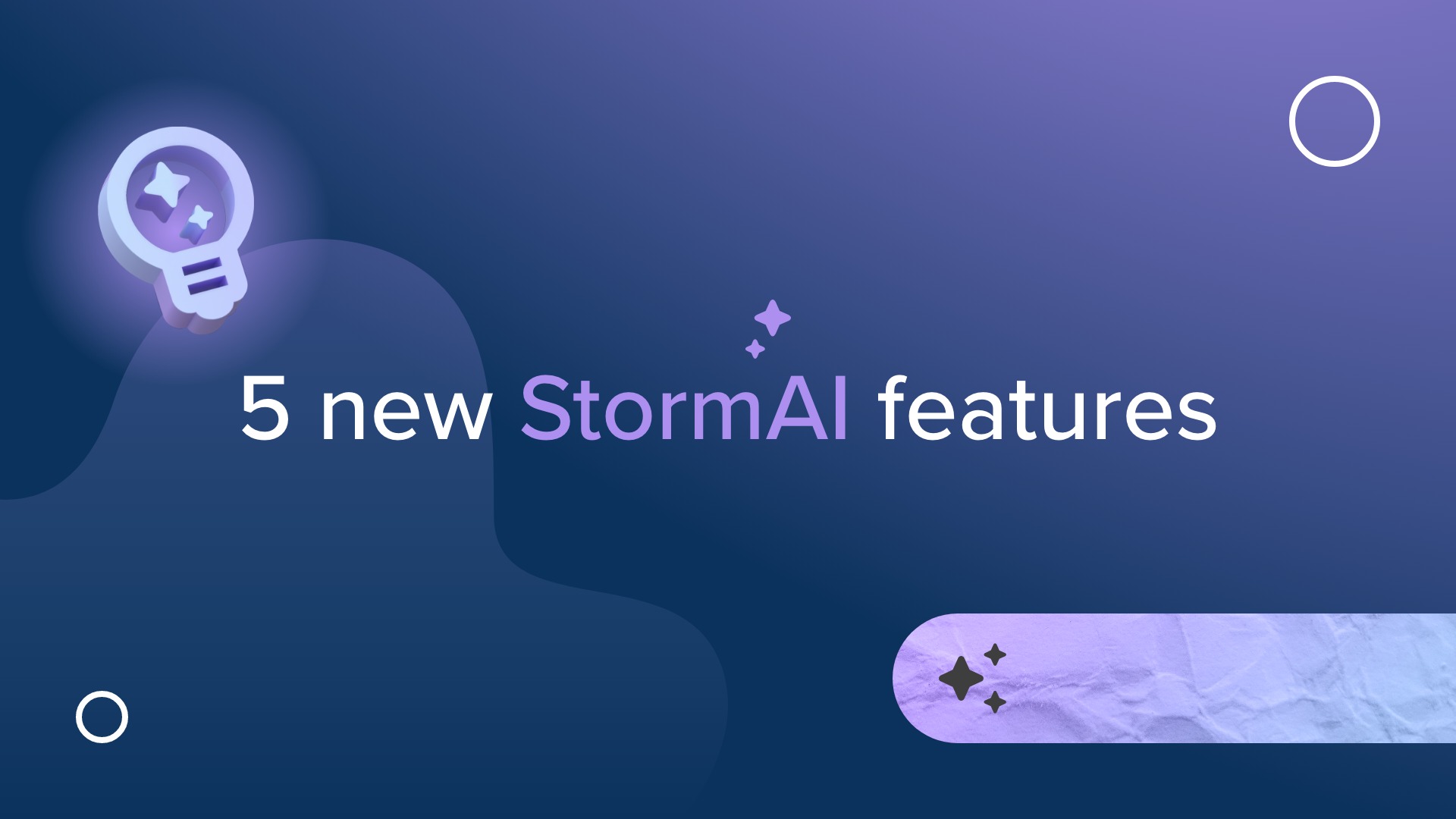How to Discover Your Company’s Knowledge Through Team Discoveries
There are two types of knowledge that keep your internal business afloat: tacit knowledge (hard to share with others) and explicit knowledge (can be easily shared with others). Tacit knowledge can be difficult to share between team members — it is the knowledge, skills, and abilities that someone gains through experience —which is why we recommend a planned discovery session in order to capture this knowledge.
The internal knowledge of a company and its employees is incredibly valuable, and many businesses have processes in place to manage and capture internal knowledge and then share it amongst their teams.
There are currently two major phenomena working against businesses that threaten the internal knowledge that they have built up over time: the pandemic and the generational transition.
With more and more valuable baby boomers retiring, capturing knowledge and storing it in a central database is imperative for a successful business model. Business leaders, who have been company landmarks, are getting ready to transition into the next phase of their lives away from the workforce. With them, they take years of tacit knowledge, skills, and strategies that assist their teams greatly. As the retirees leave their offices for the last time, they take with them years of experience that cannot easily be taught to existing employees and newcomers.
Furthermore, COVID-19 and the transition to remote work has also created a downturn in the sharing of internal knowledge. As employees begin to work from home and are less likely to connect throughout the workweek, they seek external resources to answer questions, instead of booking face-to-face meetings with other team members. This quickly crashes the chain of internal knowledge.
Due to these downfalls in the current landscape, managing internal knowledge and capturing and storing existing experience and information on collaboration software, such as Stormboard, is more valuable to seamless business practices than ever before. Stormboard works as a breeding ground to quickly and easily transfer and grow existing internal knowledge between team members. To execute this, there are a series of steps that your company must take. This begins with an open-minded leader and a vocal discovery session before translating the information on a database that can be accessed by all members of the team.
The two types of knowledge in the workplace
Psychologically speaking, there are two kinds of knowledge: explicit and tacit knowledge.
Both types of knowledge play a crucial role in the workplace, however, tacit knowledge is especially hard to transfer between employees. Where explicit knowledge refers to educational knowledge that can easily be found in databases and documents, tacit knowledge refers to more abstract information. Tacit knowledge is intuitive and experienced-based. It is a set of practices that are learned over a long period as it is done repetitively.
Where explicit knowledge may easily be found in textbooks or online, tacit knowledge is likely stored deep in the minds of other employees. It may be difficult to communicate with staff members, yet it is some of the most valuable information for the workplace.
As tacit knowledge becomes threatened due to employees retiring, changing jobs, or moving to remote locations, and it is less likely to be shared between employees, there is a need for knowledge capture and sharing information on a communal database.
Knowledge management
Planning
Any successful process begins with an agreed-upon plan between management within a company. Internal management needs to discuss how long the company can dedicate to and invest in knowledge management and what tools are best for their teams to accomplish their goals.
During the planning process, management may want to create visuals or prototypes of knowledge migration. Management should plan for success and clearly outline what the goals of this process are.
Creating and implanting an agenda will help the team stay on track and ensure that the duration allotted for each phase of content discovery has been adhered to.
Investigative discovery
Get back to the basics of your business and brand and investigate from the ground up. Start with a meeting where you perform a roundup of the branding, product database, competitors, analytics, and what the brand hopes to accomplish in the next quarter or year. By getting back to the basics of the brand, you will likely spark more internal knowledge in existing team members and give them time to begin brainstorming before individual meetings. Having team collaboration through this process is essential for a successful implementation.
Next, hold a meeting to discuss goals, strategy, and operational processes with the team. This open level of communication will allow a higher-level understanding of the project with all members of the team. You’ll want to stay committed and clear about the scope of the project, the project schedule, and the project cost.
Make sure to share the investigation with the team in a commonly accessible area, such as Stormboard.
Team member meetings
Once you’ve opened up the goals of business management and capture, it’s time to begin exploring each team member's knowledge with individual meetings. Identify a clear outline of the meeting agenda and questions that should be covered during your meeting.
These questions should cover:
Bottlenecks within the company
High-level solutions to potential problems
Priorities of each team member
Frequent customer concerns and complaints
Daily processes and informational recall
Priorities
Team roles and expectations
The process of gaining, highlighting, and distributing information during the knowledge capture process not only creates a more seamless workplace environment, but it allows each employee to feel valued and empowered within the workforce. The opportunity to share, spread, and teach their knowledge creates long-lasting, internal relationships, and rapport between members as well. Using collaborative software such as Stormboard allows team members to connect remotely with the information shared by other staff and employees.
Compile results
Once you’ve completed employee interviews and identify common themes, pain points, and priorities, the management team is ready to compile the results from your discovery sessions. During this process, the management team can identify the most important, undocumented knowledge that was gathered to share between existing team members.
As your management team compiles the most valuable knowledge, it’s important to determine where the knowledge gaps are. If you find that there are certain parts of the business model that only one team member can attend to, you may want to pay special attention to spreading that knowledge amongst other team members, so others can assist in that task should it be required.
Furthermore, identify specific resources or processes that your team has adopted over the years to attend to certain problems or projects. Document this information and make note of the different steps that are taken to complete this task effectively.
Share information
Once your management team has successfully compiled the most valuable information, it’s time to share it with the team using a shared databank or collaborative software, such as Stormboard. Stormboard acts as a permanent and safe storage unit for knowledge documentation. This secure database will help you visually capture and share information between team members and can be added to at any time.
Having an easily-accessible database of information for team members allows for information to quickly be shared between existing members. However, there’s another component to this. This knowledge capture can be utilized with new hires for quicker training practice and protocol so that all new employees are brought up to speed with the most effective strategies.
To keep Stormboard as usable as possible, we recommend allowing your employees to add information when required. Organize knowledge by what is used together so staff can quickly find what they’re browsing for. Don’t lock the access to your content, so information can quickly be found on the fly.
You may want to allocate a staff member to update the content periodically, so the information stays relevant as processes, software, and tools change over time. With the digital age constantly transitioning businesses, it’s required that team members stay flexible in their procedures.
Including contact information for support such as IT and HR is a valuable resource. We also recommend linking external resources or blog posts that may help provide further knowledge about a topic or software that staff may be unfamiliar with.
For easy walkthroughs, consider sharing photos or short videos that will simplify the process for newer staff members.
Hold a team meeting
Whether you’re working remotely or in-office, finalize your knowledge capturing session by holding a team session to discuss the implementation of the new knowledge management. During your team meeting, discuss how using these processes can simplify their day-to-day tasks and how new information can be added to the database moving forward.
Get feedback from existing team members on knowledge capture and how they think these new strategies can be improved. Overall, use this as an opportunity to gain valuable business knowledge and further strengthen your internal relationships and processes.
Conclusion
Valuing and gathering tacit knowledge within the workplace is essential for the success and overall productivity of your team. Using company collaboration software to collect and share tacit knowledge makes knowledge capture more accessible and feasible.
Consider using a Stormboard template to collect data during your sessions in order to keep it accessible and remote-friendly. You can find a collection of our templates here.
About the Author
Celina Dawdy is a freelance writer in Edmonton, Alberta. When she isn’t writing, she’s volunteering and spending time with her three dogs.












